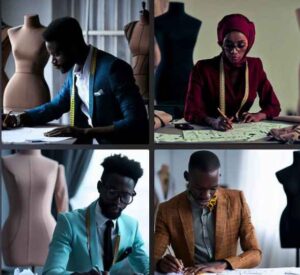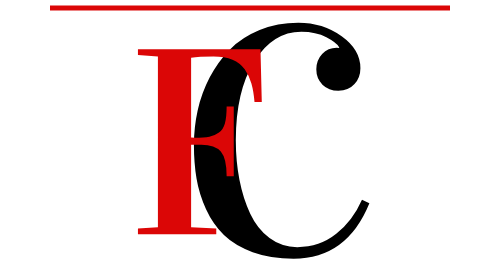A well-crafted business plan is essential for any entrepreneur who wants to make their mark in the fashion industry. It provides a roadmap for success, helping you navigate the challenges and opportunities you’ll face along the way. Nigeria, with its growing economy and rising middle class, is a promising market for fashion design.
In this article, we’ll provide a sample business plan for fashion design in Nigeria, with a focus on creating a unique and profitable venture.
The Nigerian Fashion Industry
A. Overview
The Nigerian fashion industry is booming, fueled by a growing population and increased disposable income among consumers. Fashion-forward Nigerians are embracing local and international styles, creating a vibrant and diverse market for fashion designers to tap into.
B. Market size and growth
The fashion industry in Nigeria is estimated to be worth billions of dollars and continues to grow at a rapid pace. With the right business strategy, there’s significant potential for success in this market.
Setting Up Your Fashion Design Business in Nigeria
A. Legal requirements
Before launching your fashion design business, you’ll need to register it with the appropriate government agencies in Nigeria. You may also need to secure permits and licenses, depending on the nature and scale of your operations.
B. Location and facilities
Choosing the right location for your fashion design business is crucial. You’ll want to consider factors like proximity to suppliers and retail outlets, accessibility for customers, and cost of rent. Additionally, you’ll need to invest in the necessary equipment, tools, and furnishings for your design studio and production facility.
Defining Your Unique Selling Proposition (USP)
A. Identifying your niche
To stand out in the competitive Nigerian fashion market, you need to identify your niche. This could be anything from couture bridal wear to ready-to-wear streetwear. Once you’ve found your niche, focus on designing unique and high-quality pieces that appeal to your target audience.
B. Setting your brand apart
Your brand’s identity is a key component of your USP. Develop a strong and consistent visual identity through your logo, packaging, and promotional materials. A compelling brand story that reflects your values and mission will also help you connect with your target audience.
Creating Your Fashion Design Collection
A. Understanding your target audience
Before you start designing your collection, it’s important to understand your target audience. Who are they? What are their fashion preferences and needs? By answering these questions, you can create designs that resonate with them and drive sales.
B. Design inspiration and trends
Stay updated on the latest fashion trends and seek inspiration from a variety of sources, including international runways, local culture, and art. Incorporating elements of Nigerian heritage into your designs can help your brand stand out and resonate with local consumers.
Production and Supply Chain Management
A. Sourcing materials
Sourcing high-quality materials is essential for creating a successful fashion line. Research local and international suppliers to find the best fabrics and materials that align with your brand’s aesthetic and values. Building strong relationships with your suppliers can help ensure consistent quality and timely deliveries.
B. Production methods
Choose the most efficient and cost-effective production methods for your fashion design business. You may opt to work with local artisans or partner with larger-scale manufacturing facilities. Consider factors such as production capacity, lead times, and quality control when selecting your production partners.
Marketing and Promotion
A. Social media and digital marketing
Social media and digital marketing are powerful tools for promoting your fashion brand in Nigeria. Use platforms like Instagram, Facebook, and Twitter to showcase your designs, share behind-the-scenes content, and engage with your audience. Collaborating with influencers and bloggers can also help amplify your brand’s reach.
B. Traditional marketing methods
Don’t overlook the power of traditional marketing methods, such as print advertising, fashion shows, and pop-up events. These can help you reach a wider audience and create buzz around your brand.

Sales and Distribution
A. Retail outlets and online sales
Identify the most effective sales channels for your fashion design business. This could include opening your own brick-and-mortar store, partnering with existing boutiques, or selling through e-commerce platforms. Offering a seamless online shopping experience can help you reach customers beyond Nigeria’s borders.
B. Exporting opportunities
As your fashion brand gains recognition, explore opportunities to export your designs to international markets. Participating in international trade shows and networking events can help you forge valuable connections and expand your business globally.
Financial Planning and Projections
A. Start-up costs
Calculate the start-up costs for your fashion design business, including equipment, inventory, rent, and marketing expenses. Having a clear understanding of your initial investment will help you plan your finances and secure funding if necessary.
B. Break-even analysis
Conduct a break-even analysis to determine how many units you need to sell in order to cover your costs. This will help you set realistic sales goals and make informed decisions about pricing and production levels.
Risk Analysis and Mitigation
A. Common risks in the fashion industry
The fashion industry is subject to risks such as changing consumer preferences, economic downturns, and supply chain disruptions. It’s important to be aware of these risks and develop contingency plans to minimize their impact on your business.
B. Mitigation strategies
Implement strategies to mitigate potential risks, such as diversifying your product range, maintaining strong supplier relationships, and staying informed about industry trends and developments. Regularly monitoring your business’s performance and adjusting your strategy as needed will help you stay on track and achieve your goals.
ALSO SEE: Fashion Schools in Lagos
Conclusion
Launching a successful fashion design business in Nigeria requires careful planning, creativity, and a strong understanding of your target market. By following this sample business plan, you can create a solid foundation for your venture and set yourself on the path to success in the Nigerian fashion industry.
FAQs
How can I finance my fashion design business in Nigeria?
There are various financing options available, including personal savings, loans from financial institutions, and grants from government agencies or private investors. Thoroughly research your options and choose the one that best aligns with your needs and financial goals.
What kind of legal structure should I choose for my fashion design business in Nigeria?
The most common legal structures for fashion design businesses in Nigeria are sole proprietorships, partnerships, and limited liability companies (LLCs). Consult a legal professional to determine the best structure for your specific needs and circumstances.
How can I protect my designs from being copied?
Registering your designs with the relevant intellectual property authorities in Nigeria can provide legal protection against unauthorized copying. Additionally, consider implementing confidentiality agreements with employees and suppliers to safeguard your designs.
What is the importance of sustainability in the Nigerian fashion industry?
Sustainability is increasingly important in the global fashion industry, and Nigeria is no exception. Consumers are becoming more environmentally conscious and demanding ethically-produced garments. Incorporating sustainable practices into your fashion design business, such as using eco-friendly materials and promoting fair labor practices, can boost your brand’s reputation and appeal to your target audience.
How do I price my fashion designs in the Nigerian market?
Pricing your fashion designs involves considering factors such as production costs, target audience, and market demand. Conduct market research to understand the pricing strategies of your competitors and determine a price point that reflects the quality and uniqueness of your designs while remaining competitive in the market.

Leave a Reply